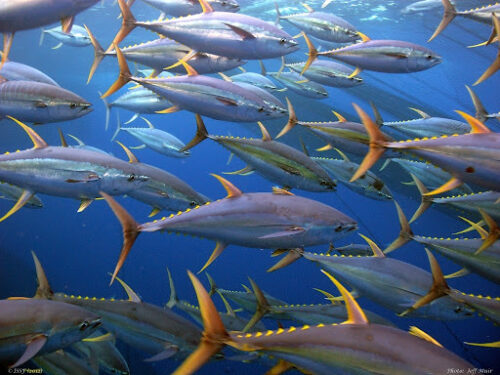Image courtesy of Flickr.
Seafood is tasty, but we are often hesitant to consume it because of the ocean’s high mercury concentration. Increased human activities have released mercury into nearby rivers, where it naturally transforms to methylmercury, a potent neurotoxin associated with lowered intelligence, child developmental delays, and cardiovascular impairments. Methylmercury also bioaccumulates in our food web, making its health consequences long-lasting. Most of our exposure to methylmercury comes from coastal fish consumption. Thus, we could effectively minimize the health risks of mercury intake by mitigating pollution at the source.
Previously, scientists believed that atmospheric deposition is the most important contributor to coastal mercury. Yale postdoctoral researcher Maodian Liu and colleagues recently challenged this traditional view by developing a high spatial resolution dataset of global riverine mercury export. They discovered that worldwide riverine mercury export to coastal oceans is actually three-fold that of atmospheric deposition, making it an unexpected driving force of the global mercury cycle.
Riverine mercury measurement data has been scarce in the past, resulting in large variations in export estimates between different studies. “The greatest challenge is to verify the reasonability of our estimates because our results are three times the recommended value of the United Nations Environment Programme,” Liu said. Nevertheless, Liu is confident in this estimate since it matches empirical observation. Building off this work, Liu and colleagues are developing a global model to further quantify the spatial differences of river mercury cycling in coastal oceans. Understanding the overlooked riverine process will help policymakers better regulate mercury pollution issues, targeting not only atmospheric but also aquatic releases.

